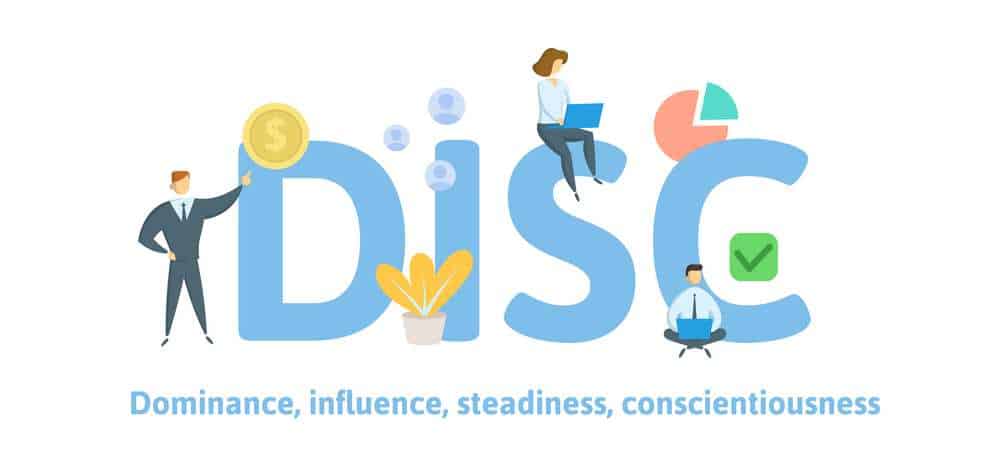The 12 DISC Personality Types: An In-depth Exploration
In the world of psychology, few theories have had as much impact as the DISC personality theory. (Take the DISC test here.) Developed by Dr. William Moulton Marston in the 1920s, the DISC theory analyzes and categorizes individual personality traits into four primary types: Dominance (D), Influence (I), Steadiness (S), and Conscientiousness (C). The practical applications of the DISC theory span numerous domains, from personal relationships to professional environments, helping individuals understand their behaviors and the behaviors of others.
II. Understanding the Four Primary DISC Personality Types
Each of the four primary DISC personality types corresponds to specific behavioral traits.
- Dominance (D): People with this personality type are usually direct, strong-willed, and assertive. They enjoy taking on challenges, making decisions, and solving problems.
- Influence (I): The ‘Influence’ individuals are social butterflies. They’re typically expressive, optimistic, and love to engage in social situations. They have a knack for influencing or persuading others.
- Steadiness (S): The ‘Steadiness’ personalities are known for their dependability, patience, and consistency. They value cooperation, sincerity, and harmony in their environment.
- Conscientiousness (C): The ‘Conscientiousness’ types are detail-oriented, analytical, and adhere to standards and rules. They place a high value on accuracy, stability, and systematic approaches to problems.
III. The 12 DISC Personality Types
While the four primary traits offer broad classifications, individuals often display various traits. Combining primary and secondary traits, the DISC theory offers 12 subtypes that provide a more nuanced understanding of personality.
- High D: These individuals are confident, assertive, and decisive. Their strengths lie in their determination and ambition, but their limitations may be perceived aggressiveness or lack of patience. They flourish in environments that value directness and results. When collaborating, it’s beneficial to be clear, concise, and straightforward.
- High I: The ‘High I’ personalities are outgoing, lively, and social. They possess a natural ability to inspire, motivate, and influence others. However, they may struggle with focusing on details and follow-through. They prefer environments that offer freedom of expression and human interaction. To collaborate effectively with them, it’s best to share ideas openly and maintain a positive, enthusiastic demeanor.
- High S: The ‘High S’ types are patient, helpful, and team players. They thrive in stable, harmonious environments and might find it challenging to adapt to sudden changes. They appreciate mutual support and collaboration. When interacting with ‘High S’ individuals, it’s important to be respectful, reliable, and understanding.
- High C: These individuals are analytical, meticulous, and systematic. They shine in structured, detail-oriented environments but might struggle in chaotic, unpredictable settings. They value precision and clear guidelines. When dealing with ‘High C’ personalities, focus on facts and details, and be patient with their need for accuracy.
The blended DISC types further refine these characteristics:
- DI/ID: Individuals with these traits are dynamic, ambitious, and persuasive. They’re best suited to environments that value innovation and influence. To collaborate, be aware of their need for recognition and open to new ideas.
- DS/SD: These types are steady, supportive, and cooperative. They work well in team-oriented, harmonious settings. When collaborating, provide clear expectations and respect their need for stability.
- DC/CD: These types are cautious, meticulous, and determined. They thrive in organized, detail-oriented environments. To collaborate effectively, focus on details, be patient, and appreciate their thoroughness.
- IS/SI: These types are patient, friendly, and supportive. They thrive in environments that value team cooperation and friendliness. To collaborate, show appreciation for their consistent performance and avoid high pressure or confrontational situations.
- IC/CI: These types are creative, friendly, and detail-oriented. They thrive in environments that appreciate attention to detail and creativity. Collaboration requires a balance between innovation and structure.
- SC/CS: These types are steady, systematic, and reliable. They do well in settings that value reliability and systematic approaches. When collaborating, provide clear, detailed instructions and respect their need for predictability.
- SI/IS: These types are patient, cooperative, and amiable. They perform best in cooperative, supportive environments. To collaborate, avoid aggressive confrontation and appreciate their reliable, consistent performance.
- CD/DC: These types are cautious, systematic, and meticulous. They thrive in environments that value high standards and precision. When collaborating, be detailed, patient, and respect their analytical approach.
IV. Identify Strengths, Weaknesses, and Preferences
The DISC personality types offer a nuanced understanding of human behavior. They help us identify our strengths, weaknesses, and preferences, improving our interactions and collaborations. Whether we are ‘High D’ or ‘High C’, ‘IS/SI’, or ‘DC/CD’, understanding these DISC types enables us to navigate our personal and professional better

